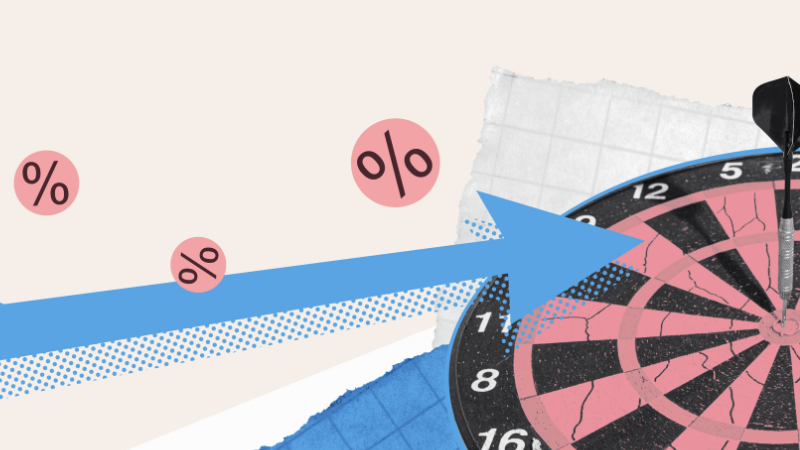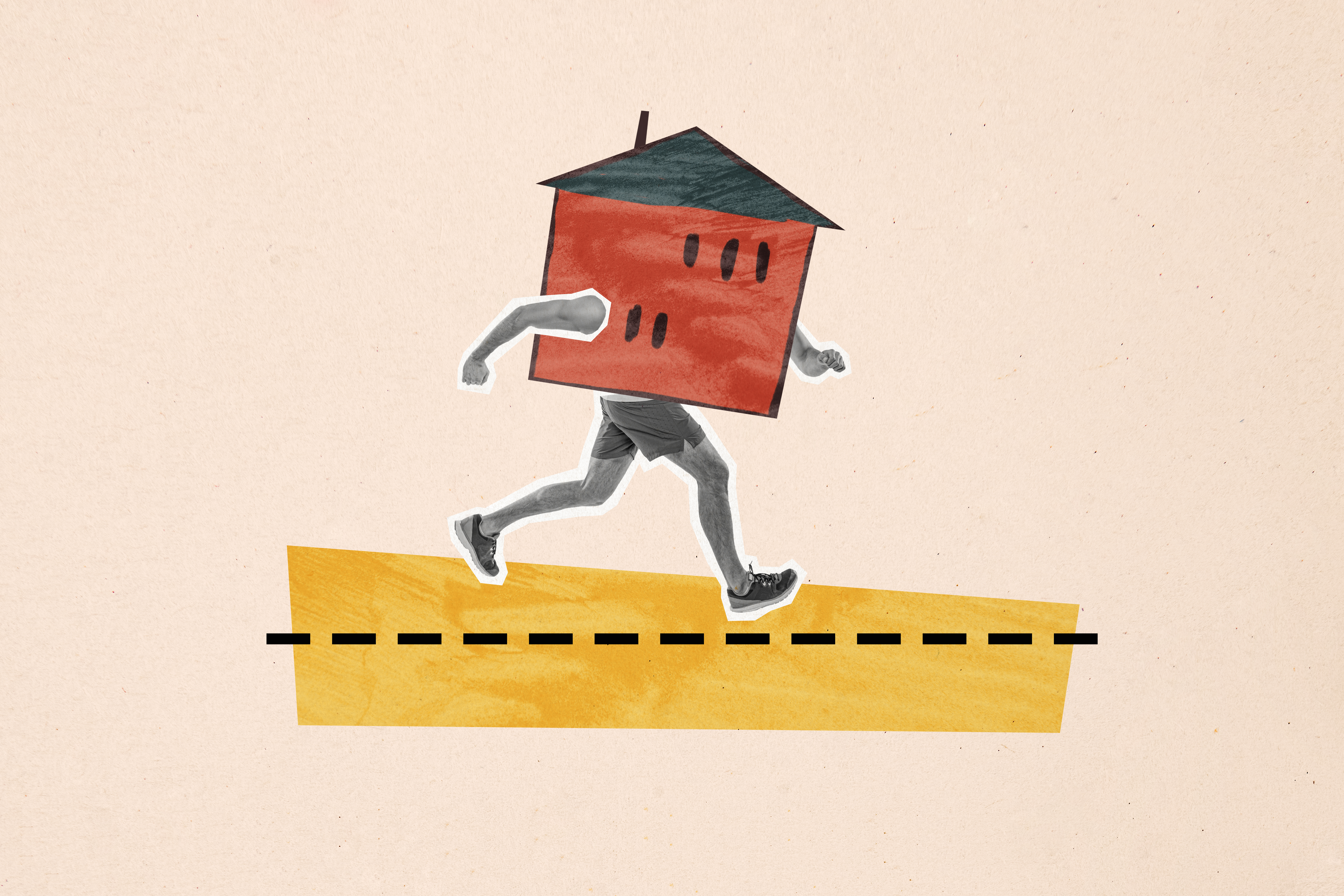Types of Mortgages: Fixed vs Variable Rates – Which Saves You More? [2025]


Choosing between different types of mortgages has become increasingly crucial as the Bank of England's base rate currently sits at 4%, following several rate cuts in 2024 and 2025. With fixed rate mortgages offering stability at around 4.01% for two-year deals, while Standard Variable Rates (SVRs) average a substantial 7.42%, your decision could significantly impact your monthly payments.
Fixed-rate mortgages keep your monthly interest payments consistent for a set period, typically lasting 2 to 5 years. However, when this fixed term ends, you’ll automatically switch to a Standard Variable Rate, which is often considerably more expensive. In contrast, variable-rate mortgages fluctuate based on economic conditions, offering both potential savings and risks. As of August 2025, average rates on two and five-year fixed mortgages stood at 5% and 5.01% respectively, while many lenders continue to lower their fixed rates in response to current and anticipated base rate changes.
In this guide, we’ll explore the different types of mortgages available to you in 2025, comparing their features, benefits, and drawbacks to help you determine which option might save you more money in both the short and long term.
Fixed Rate Mortgages Explained
Fixed-rate mortgages remain the most popular choice among British homebuyers, with an impressive 96% of mortgage applications in the first quarter of 2025 opting for this stability-focused option. This overwhelming preference reflects the certainty these mortgages provide in an otherwise fluctuating economic landscape.
How fixed-rate mortgages work in 2025
The fundamental appeal of a fixed-rate mortgage lies in its predictability. Once you secure your mortgage, the interest rate remains unchanged throughout the entire deal period. This means your monthly payments stay consistent regardless of what happens to the Bank of England base rate, allowing for more straightforward household budgeting.
Fixed-rate mortgages essentially lock you into a specific interest rate for a predetermined period. During this time, you’re protected from rate increases, although conversely, you won’t benefit if rates fall. This arrangement creates a financial safety net, especially valuable during periods of economic uncertainty.
As of August 2025, fixed-rate mortgages offer notably better value than many variable alternatives. The average two-year fixed rate currently stands at 4.52%, whilst the five-year fixed rate averages 4.51%. These figures represent a substantial improvement from August 2023, when the average two-year fix reached 6.85%.
Typical fixed term lengths: 2, 5, and 10 years
Most lenders offer several fixed-term options to suit different financial situations and plans:
- 2-year fixed: The shortest common option, providing initial stability without long-term commitment. Ideal if you anticipate moving home or changing circumstances soon. Current rates start from around 3.73% for those with a 60% loan-to-value.
- 5-year fixed: Offers extended predictability, reducing the frequency of remortgaging and associated fees. Current rates begin from approximately 3.85% for those with a 60% loan-to-value.
- 10-year fixed: Provides the longest standard fixed period available, offering a decade of payment certainty. Rates typically start higher, around 4.14% for an 80% loan-to-value, reflecting the lender’s increased risk over the extended period.
Some lenders additionally offer 3-year fixed deals as a middle-ground option, plus occasionally 7-year terms or even longer fixed periods, though these are less common.
What happens after the fixed term ends
The conclusion of your fixed term represents a critical juncture in your mortgage journey. Without taking action, your mortgage automatically transfers to the lender’s Standard Variable Rate (SVR). This transition often results in significantly higher monthly payments, as the average SVR across major lenders stood at 6.99% in February 2025, with all lenders averaging 7.99%.
Furthermore, SVRs can fluctuate at the lender’s discretion. Whilst they’re commonly influenced by Bank of England base rate changes, lenders retain the freedom to adjust their SVRs independently. This unpredictability makes long-term financial planning considerably more challenging.
Fortunately, lenders typically contact customers before their fixed rate expires, generally providing at least five working days’ notice of new payment amounts. This notification gives you time to consider your options, primarily:
- Doing nothing and accepting the SVR
- Remortgaging with your current lender
- Switching to a new lender entirely
Given the substantial difference between fixed rates and SVRs, most homeowners opt to remortgage before their fixed deal expires, ideally starting the process 4-6 months beforehand.
Variable Rate Mortgages and Their Types
Unlike their fixed counterparts, variable-rate mortgages offer interest rates that fluctuate throughout the term, meaning your monthly payments can both rise and fall. These different types of mortgages provide options for borrowers willing to accept some uncertainty in exchange for potential savings or flexibility.
Tracker mortgages: base rate + margin
Tracker mortgages follow an external interest rate—typically the Bank of England base rate—plus a set margin determined by the lender. For instance, if the base rate is 4% and your margin is 1%, your mortgage rate would be 5%. Consequently, when the base rate changes, your interest rate adjusts automatically, directly affecting your monthly repayments.
These mortgages usually track the external rate for a defined period, commonly between one and five years, though lifetime tracker options also exist. Since tracker rates move in strict accordance with the base rate, they provide more transparency than other variable options. Indeed, if the base rate decreases by 0.25%, your mortgage rate will likewise fall by exactly 0.25%.
Standard Variable Rate (SVR): lender-controlled
The Standard Variable Rate represents each lender’s default interest rate, which borrowers typically revert to after their initial fixed or tracker deals expire. Unlike tracker mortgages, SVRs are set entirely at the lender’s discretion and can change at any time, regardless of base rate movements.
SVRs are primarily influenced by the Bank of England base rate but are not directly tied to it. As of August 2025, SVRs average approximately 7.42%, substantially higher than most other mortgage rates. Despite this higher cost, SVRs typically offer greater flexibility since they rarely carry early repayment charges, allowing you to switch mortgages or make overpayments without penalties.
Discount rate mortgages: below SVR deals
Discount rate mortgages function by offering a set reduction off the lender’s SVR for a specific period, usually two to five years. For example, with an SVR of 4% and a discount of 1%, you would initially pay 3% interest. Subsequently, if the lender raises its SVR to 5%, your rate would increase to 4%, maintaining the same discount.
These mortgages work similarly to trackers but track the lender’s SVR rather than the external base rate. Since SVRs can change unpredictably at the lender’s discretion, discount mortgages offer less certainty than tracker mortgages despite potentially attractive initial rates. Once the discount period ends, you’ll typically move onto the full SVR unless you remortgage.
How collars and caps affect variable rates
Many variable mortgages feature built-in protective mechanisms known as collars and caps that limit how low or high your interest rate can go. A collar (or floor) sets a minimum rate below which your interest won’t fall, even if the tracked rate decreases further. Meanwhile, a cap establishes a maximum ceiling rate, protecting you from extreme increases.
For instance, if your tracker mortgage has a collar of 3%, your rate won’t decrease below this threshold even if the base rate falls significantly. Similarly, with a capped rate, your interest won’t exceed the predetermined maximum regardless of how high the tracked rate climbs.
These features can affect both the appeal and cost of variable mortgages. Caps provide valuable security by ensuring your payments never exceed a certain amount, but lenders often charge higher interest rates for this protection. Collars benefit lenders by protecting their profit margins, but limit the potential savings you might enjoy during periods of falling interest rates.
Pros and Cons: Fixed vs Variable Mortgages
When comparing different types of mortgages, understanding the strengths and limitations of each option becomes essential for making informed financial decisions. Both fixed and variable rate mortgages offer distinct advantages depending on your circumstances and risk tolerance.
Fixed rate pros: stability and budgeting
The primary benefit of fixed-rate mortgages is the predictability they provide. Your monthly payments remain consistent throughout the entire fixed term, regardless of economic changes. This stability creates peace of mind and helps with budgeting, as there are no surprises due to interest rate fluctuations.
Fixed rates also shield you from sudden increases in the Bank of England base rate. Whenever interest rates rise in the broader economy, your mortgage payments stay unchanged, protecting your household finances during volatile economic periods.
This certainty makes fixed-rate options particularly appealing for those on tight budgets or with stable incomes who value financial predictability above all else.
Fixed rate cons: early repayment charges
The most significant disadvantage of fixed-rate mortgages involves early repayment charges (ERCs). If you decide to pay off your mortgage or switch to a different product before the fixed term expires, you may face substantial penalties. These charges typically range between 1% and 5% of the loan amount.
Additionally, fixed-rate mortgages prevent you from benefiting when interest rates decrease. If rates fall significantly during your fixed term, you’ll continue paying your higher locked-in rate unless you remortgage and incur those early repayment penalties.
Fixed rates also typically start higher than initial variable rates, meaning you might pay more in interest during the early years of your mortgage.
Variable rate pros: flexibility and potential savings
Variable-rate mortgages often begin with lower interest rates compared to fixed deals. This could result in reduced monthly payments, particularly if interest rates remain low or decrease further.
Moreover, variable-rate mortgages typically offer greater flexibility. Many come without early repayment charges, allowing you to switch deals or make unlimited overpayments without financial penalties. This freedom can be valuable if you’re considering moving home or want to pay down your mortgage faster.
Some trackers even allow you to switch to a fixed-rate product at no additional cost, offering adaptability as your circumstances change.
Variable rate cons: risk of rising payments
The fundamental drawback of variable mortgages is their unpredictability. Your payments can increase unpredictably with interest rate rises, potentially straining your budget. This uncertainty can be particularly challenging during periods of economic volatility.
For instance, some homeowners have seen their monthly payments nearly double in just six months following base rate increases. This exposure to financial risk can rapidly transform an affordable mortgage into an increasingly burdensome commitment.
Variable rates also make budgeting more difficult, as you must be prepared for payment fluctuations. This unpredictability can be especially problematic for those with tight finances or fixed incomes.

Remortgaging and Switching Options
Navigating between different types of mortgages requires understanding when and how you can switch products without unnecessary costs. Understanding your options helps maximise flexibility while minimising expenses.
When can you remortgage a fixed or tracker deal?
The timing of remortgaging varies according to your mortgage type. With fixed-rate mortgages, you can typically remortgage without penalty once your fixed term concludes. Nevertheless, switching before this period ends usually triggers early repayment charges. Some lenders allow fee-free switching within the final 3-5 months of your deal.
For tracker mortgages, similar rules apply regarding end-of-term switching. Yet tracker mortgages often offer greater flexibility throughout their term. Most Standard Variable Rate (SVR) mortgages allow penalty-free remortgaging at any point, providing maximum flexibility.
Lenders typically contact you before your current deal expires, giving you time to arrange a new mortgage before automatically transferring to their SVR.
Early repayment charges and switching fees
Early Repayment Charges (ERCs) represent the most significant cost when changing mortgage deals prematurely. These charges typically range between 1% and 5% of your outstanding mortgage balance. For example, a 2% ERC on a £200,000 mortgage would cost £4,000.
ERCs commonly apply when:
- Paying off your mortgage before your current deal ends
- Making overpayments beyond your annual allowance (typically 10-20%)
- Switching to a new product or lender mid-deal
Many lenders structure ERCs to decrease over time – perhaps starting at 5% in year one and reducing to 1% by the final year. When remortgaging, you can either pay these charges upfront or sometimes add them to your new mortgage balance.
Track and switch options explained
Several lenders now offer innovative “track and switch” facilities, providing exceptional flexibility across mortgage types. This arrangement allows you to begin with a tracker mortgage but switch to a fixed rate later without incurring early repayment charges.
This option proves valuable for borrowers uncertain about immediately fixing their rate or those wanting to benefit from tracker rates initially, whilst retaining the ability to secure future stability. Once your tracker mortgage has drawn down, you can switch to any fixed rate product offered by your lender without additional credit checks.
Importantly, while the switch itself avoids ERCs, your new fixed rate product will typically carry its early repayment conditions.
Mortgageable offers a free Equifax Credit Report as part of its service, with no obligation to proceed. Something worth considering.
Which Mortgage Type is Right for You?
Selecting the ideal mortgage from various types of mortgages ultimately depends on your personal circumstances rather than a one-size-fits-all solution.
Assessing your risk tolerance and income stability
Your comfort level with uncertainty plays a crucial role in mortgage selection. If rising payments would cause financial stress, a fixed rate offers valuable protection. Correspondingly, those with financial flexibility might benefit from variable rates’ potential savings.
Income stability is equally important. Steady, predictable income typically aligns with fixed rates, whilst fluctuating earnings might require the flexibility of variable options that permit penalty-free overpayments.
Short-term vs long-term financial planning
Consider your anticipated timeframe. Shorter mortgage terms (under 25 years) mean higher monthly payments but substantially less interest overall. Longer terms reduce monthly costs but increase the total repayment amount considerably.
Your future plans matter too. If you might move within 2-5 years, be cautious about fixed deals with hefty early repayment charges.
Should first-time buyers choose fixed or variable?
First-time buyers typically benefit from fixed rates. The predictability helps with budgeting during the initial homeownership adjustment period. Many opt for longer terms (35-40 years) to make monthly payments more affordable, whilst planning to make overpayments when possible or remortgage to shorter terms later.
Related reading:
Conclusion
Choosing between fixed and variable rate mortgages ultimately depends on your personal priorities and financial circumstances. Fixed rates undoubtedly offer certainty and protection against market fluctuations, explaining why 96% of mortgage applicants in early 2025 selected this option. The peace of mind that comes with stable monthly payments often outweighs the slightly higher initial rates compared to variable alternatives.
However, variable mortgages deserve serious consideration, especially during periods when experts predict falling interest rates. These products typically offer greater flexibility without early repayment charges, allowing you to make unlimited overpayments or switch deals without penalties. Though this flexibility comes with inherent risk, some borrowers find the potential savings worth the uncertainty.
Your decision should factor in both your risk tolerance and future plans. First-time buyers generally benefit from the stability of fixed rates while adapting to homeownership costs. Alternatively, those with substantial financial buffers might prefer the potential advantages of variable rates, particularly tracker mortgages that transparently follow the Bank of England base rate.
Remember that mortgage deals rarely last the full term of your loan. Most homeowners remortgage multiple times throughout their property ownership journey. Therefore, your current choice represents just one phase of your long-term financial strategy rather than a permanent commitment.
Before making your final decision, take time to calculate the actual monthly payment differences between available options. Small percentage differences can translate to significant amounts when applied to large loan sums over extended periods. Additionally, consider seeking professional mortgage advice tailored to your specific situation, as the right choice now could save you thousands of pounds over the coming years.
The mortgage market continues to evolve alongside economic conditions. Fixed rates have become increasingly competitive in 2025, yet variable options still serve important purposes for specific borrower profiles. The best mortgage for you balances immediate affordability with long-term value while accommodating your future plans and comfort with financial uncertainty.
Key Takeaways
Understanding the fundamental differences between fixed and variable mortgages can save you thousands of pounds over your mortgage term and help you make the right choice for your financial situation.
• Fixed rate mortgages offer payment stability at around 4.52% (2-year) but include early repayment charges of 1-5% if you switch before the term ends
• Variable rates start lower but can fluctuate unpredictably – SVRs average 7.42% whilst tracker mortgages follow base rate plus margin transparently
• 96% of 2025 mortgage applicants chose fixed rates for budgeting certainty, making them ideal for first-time buyers and those preferring predictable payments
• Variable mortgages provide flexibility without early repayment penalties, allowing unlimited overpayments and easier switching between deals
• Most homeowners remortgage multiple times, so your current choice represents one phase rather than a permanent 25-year commitment to consider
The key is matching your mortgage type to your risk tolerance, income stability, and future plans rather than simply choosing the lowest initial rate available.















